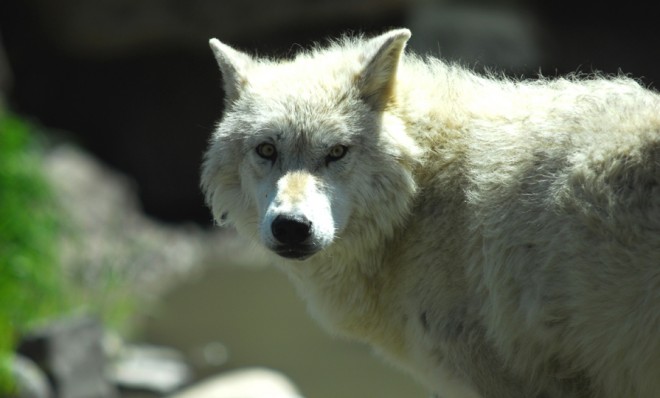How wolves are helping feed hungry grizzly bears in Yellowstone
The top-level predators need each other more than you would think

"Bloodthirsty predators seemed to have no place in the beautiful pastoral parks, at least not in large numbers." That was from an internal government report that dates back to the early 20th century, highlighting the boneheaded mindset of park authorities to remove and relocate top-level predators from tourist-friendly destinations like Yellowstone National Park.
The initiative was even given an ominous name: "Predator control."
Of course, eliminating an integral part of the food chain had a number of detrimental effects on the park's delicate ecosystem. Rangers were ordered to destroy pelican eggs to encourage trout fishing, for starters. And left unchecked by wolves, wild elk populations exploded, which caused wild bushes like the serviceberry (which tastes "a bit like sweet cherry with a hint of almond") and the huckleberry to undergo steep declines.
The Week
Escape your echo chamber. Get the facts behind the news, plus analysis from multiple perspectives.

Sign up for The Week's Free Newsletters
From our morning news briefing to a weekly Good News Newsletter, get the best of The Week delivered directly to your inbox.
From our morning news briefing to a weekly Good News Newsletter, get the best of The Week delivered directly to your inbox.
That's bad news for grizzly bears, since the berries are actually an important part of a well-rounded diet for the threatened species. The large, omnivorous furballs typically rely on the berries by the time late summer/early fall rolls around, especially as they prepare to hibernate for the winter.
It wasn't until October 1991 that Congress sought to undo nearly a century's worth of ecological damage by support a modest plan to reintroduce wolves to Yellowstone. Now, a new report published in the Journal of Animal Ecology has some exciting news concerning the park's food web: The influx of wolves have apparently helped hungry grizzlies get their fair share of grub.
In the past 19 years, wolf populations have grown steadily, while elk populations are falling to more manageable numbers. Moreover, the percentage of berry waste found in the bears' excrement has nearly doubled since wolves were reintroduced.
In fact, the positive benefits have trickled far down the food chain. According to Discovery News, "The new plethora of berries is additionally producing flowers of value to pollinators such as butterflies, insects and hummingbirds. Birds are eating the berries, as are other animals, both small and large."
A free daily email with the biggest news stories of the day – and the best features from TheWeek.com
Researchers are hoping that the increased berry production will help offset the decline of another bear staple being threatened by climate change: The whitebark pine nut.
Scientists acknowledge that it will take some time for berry growth to stabilize. At the moment, "it may not be a panacea or a big silver bullet as a food item for the grizzlies, "says study lead author William Ripple, an Oregon State University professor of forest ecosystems.
Still: The ecological lesson here is clear. And it's a nice reminder that even fearsome creatures like wolves and bears need one another, even if the returns aren't immediately obvious.
-
 Is Europe finally taking the war to Russia?
Is Europe finally taking the war to Russia?Today's Big Question As Moscow’s drone buzzes and cyberattacks increase, European leaders are taking a more openly aggressive stance
-
 How coupling up became cringe
How coupling up became cringeTalking Point For some younger women, going out with a man – or worse, marrying one – is distinctly uncool
-
 The rapid-fire brilliance of Tom Stoppard
The rapid-fire brilliance of Tom StoppardIn the Spotlight The 88-year-old was a playwright of dazzling wit and complex ideas